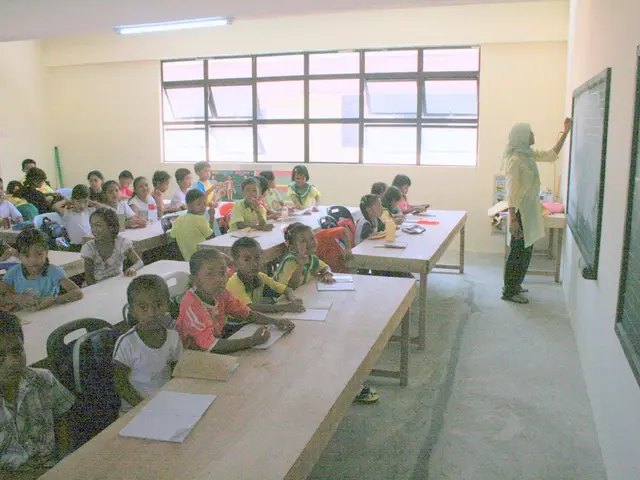India Needs to Address Its Propulsion Deficit Issue
India's reliance on foreign propulsion systems for its defence sector has emerged as a significant constraint for strategic autonomy, with over 60% of major-arms imports between 2019 and 2023 being propulsion-related components. This dependence, as highlighted by a question in the 2014 UPSC examination, has the potential to influence both Indian defence and the economy in the short and long run.
Historically, India has been reliant on imported engines for its fighter aircraft, a fact evident in the delays in engine deliveries that have hampered the commissioning of indigenous fighters like the LCA Mk1A. This dependence makes India vulnerable to external suppliers' political and commercial decisions, which can delay or restrict access to critical military technologies.
One of the most significant failures in indigenous engine development is the Kaveri engine project, launched by the Defence Research and Development Organisation (DRDO) in 1989 to develop a high-performance turbofan engine for the Light Combat Aircraft. Despite decades of effort, the project has failed to meet necessary performance benchmarks like thrust-to-weight ratio and reliability.
The absence of an indigenous engine poses a substantial challenge to India's air combat capabilities, particularly in the context of future air dominance and the Indian Air Force's plans to modernize and expand to 42 squadrons with around 450 fighter jets by 2035. Without robust propulsion solutions, upgrading existing fleets and integrating indigenous technologies could be hampered.
The technical complexity and expertise gap in developing advanced jet engines is another obstacle. Developing such engines requires sophisticated technology, manufacturing infrastructure, and expertise, which India still lacks fully. This technological gap has delayed indigenous propulsion development and forced reliance on foreign engines for operational readiness and performance.
Strategic autonomy demands the ability to design, produce, and maintain critical defence technologies domestically. The propulsion gap means India remains partially dependent on foreign suppliers, limiting its control over defence supply chains and operational independence in conflict scenarios.
The turbine inlet temperature (TIT) in modern combat engines exceeds 1700 °C, necessitating single-crystal blades and ceramic-matrix thermal-barrier coatings. However, India still has less than 30% indigenous content in hot-section hardware for its engines, with coatings and single-crystal casting lagging.
The absence of an operational domestic high-altitude test facility forces costly leasing of Russian IL-76 flying testbeds and chambers. Year-to-year allocations and delayed cash-flows also hamper the long-lead procurement of super-alloy ingots and bespoke tooling in India.
The first F404-IN20 engine for 83 Tejas Mk-1A fighters reached Hindustan Aeronautics Limited (HAL) in April 2025, two years late. Full Authority Digital Engine Control (FADEC) software, which governs fuel scheduling and variable geometry in modern combat engines, is another area where India lags behind.
In conclusion, bridging India's propulsion gap is crucial for the country to achieve self-reliance in military aviation and strengthen its defence posture independently. The control of propulsion alone multiplies the other three pillars (avionics, weapons, low-observable structures) by determining range, payload, climb-rate, and growth potential.
- The history of India's military aviation sector has often been marked by reliance on imported engines, as seen in the delayed commissioning of indigenous fighters like the LCA Mk1A due to engine delivery issues.
- The economic impact of this dependence extends beyond the defence sector, with India's vulnerability to external suppliers' decisions impacting the country's strategic autonomy in both the short and long term.
- The science and technology behind advanced jet engines pose a significant challenge, requiring sophisticated manufacturing infrastructure, expertise, and indigenous development to bridge the current gap.
- Education and self-development in the field of aerospace engineering are essential to foster the necessary talent and skills for indigenous engine development and the achievement of strategic autonomy.
- The finance and investing sectors can play a crucial role in providing the necessary funds for research, development, and production of indigenous engines in India.
- In the realm of general news, overcoming the propulsion gap for military aviation in India is a significant development that has far-reaching implications for the country's defence capabilities and strategic autonomy.
- The sports of Formula One showcase the cutting-edge technology and engineering excellence required for developing advanced jet engines, offering valuable insights and inspiration for India's quest for self-reliance in military aviation.




